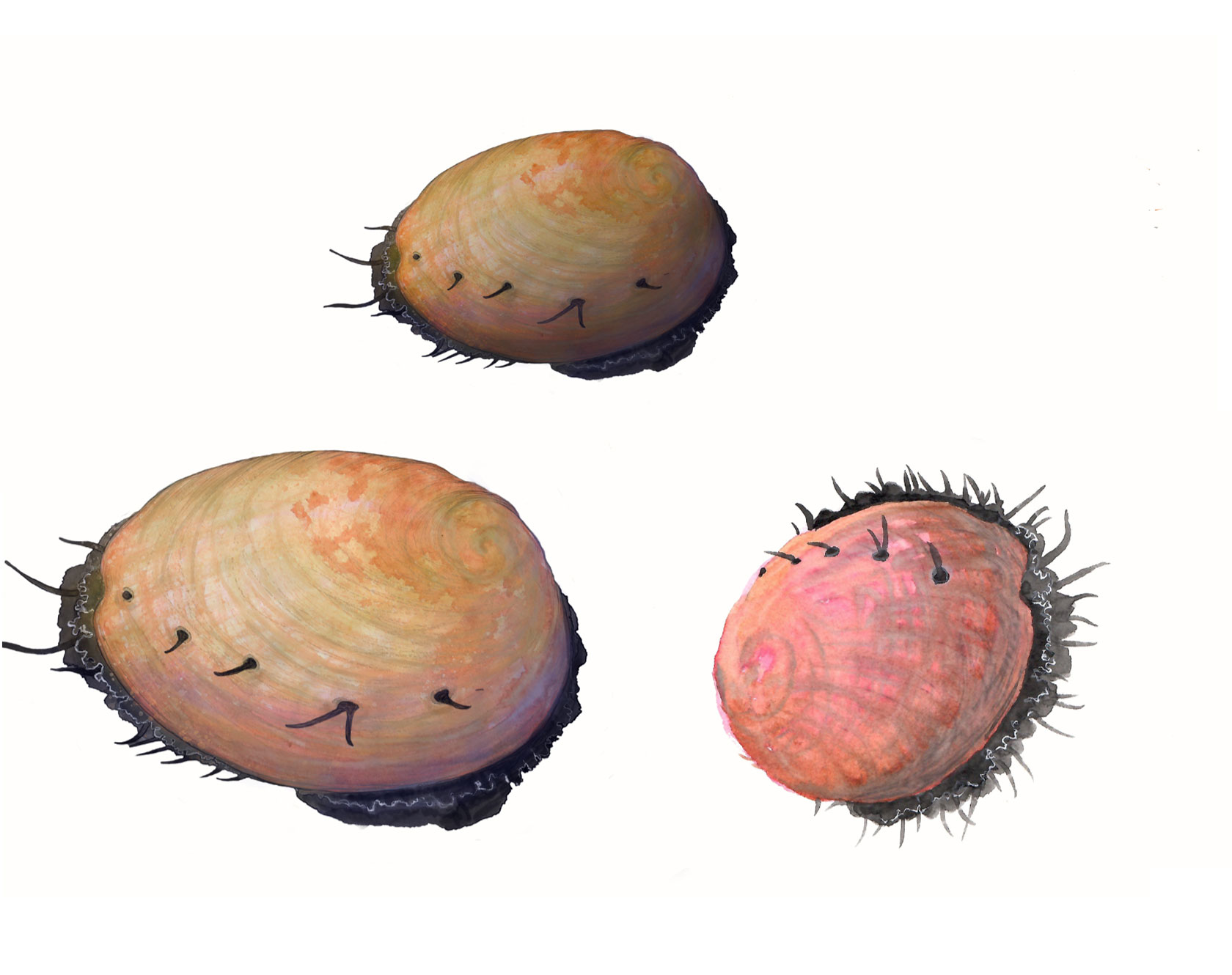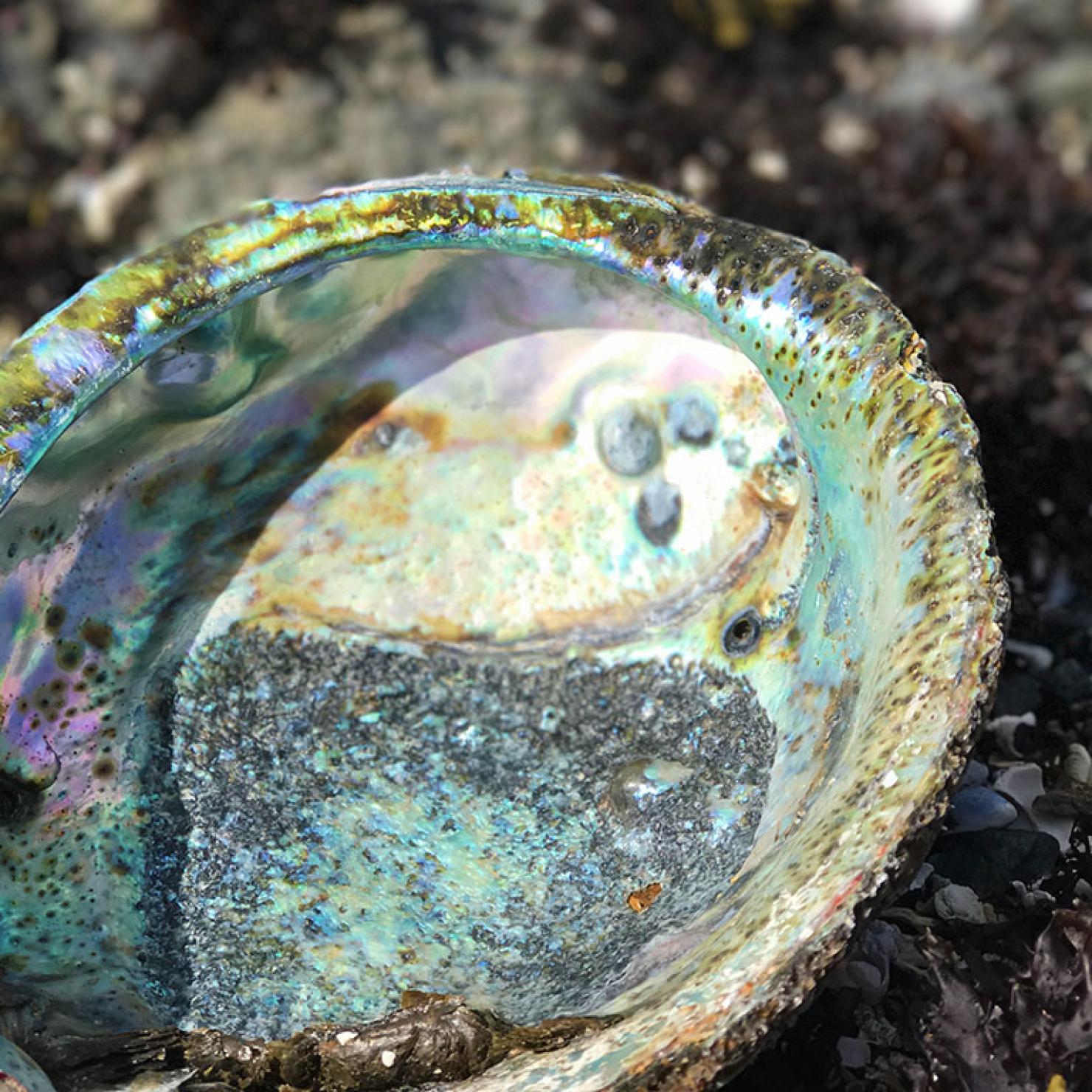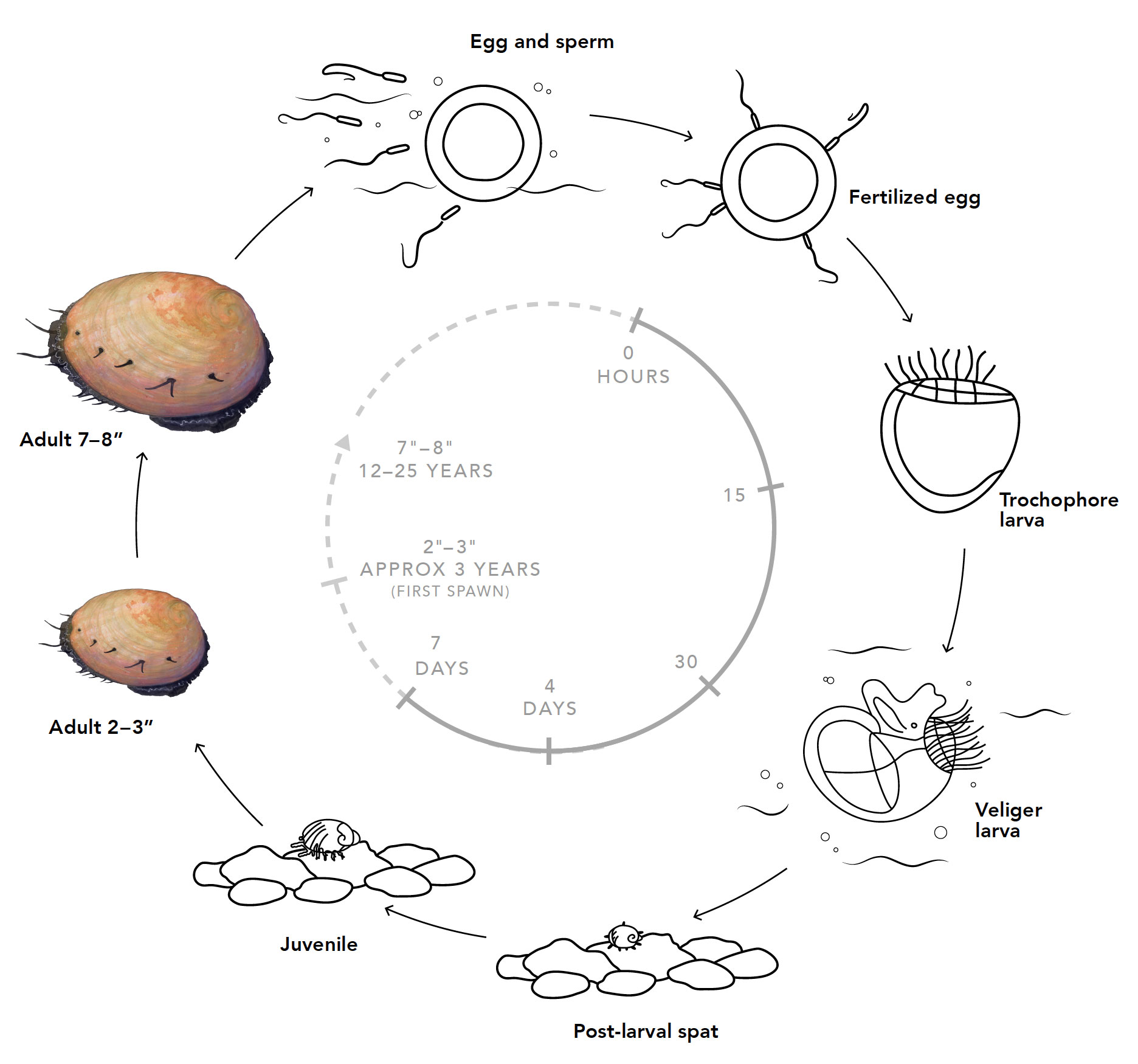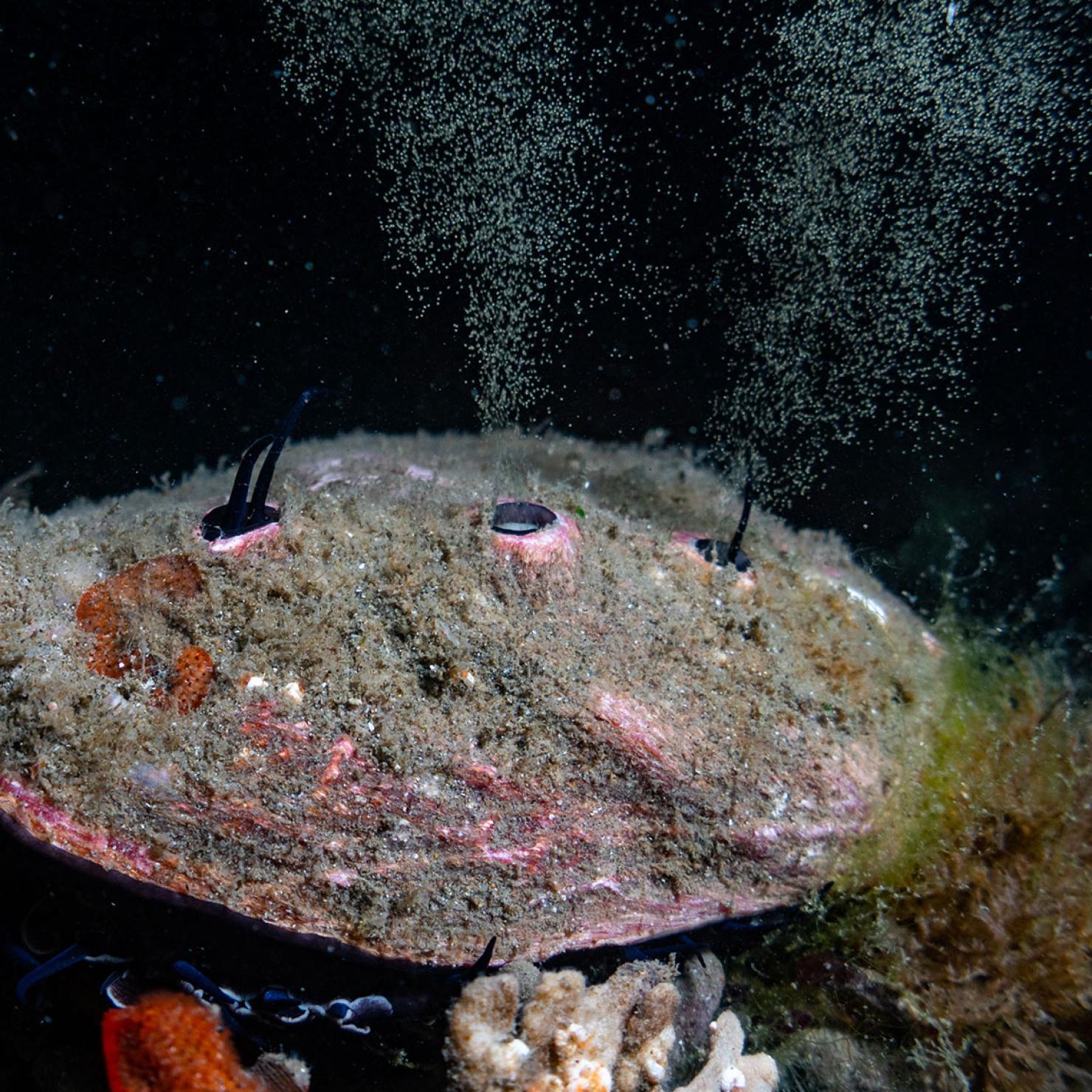Abalone are naturally abundant around Monterey, California and the word “aulon,” traces back to the Indigenous Rumsen people of that area, which then got converted to “abulon” by the Spanish. In Latin, the genus Haliotis means sea ear, and while there are many species of abalone in the world’s oceans, all within this same genus, along the California coast the reds are not only the largest, but have the greatest range. They can be found from Oregon to Baja California in Mexico, with six other smaller species, white, black, green, pink, pinto, and flat, found in more limited ranges.
Abalone are marine snails that look unlike most snails we know. Their spiraled shell has been flattened to a cap of calcium carbonate that covers the fleshy foot. This foot emerges from the domed shell with a flouncy edge and waving tentacles, and attaches strongly to rocky underwater surfaces. It is a powerful foot force, holding firmly to its substrate. The abalone shell has a row of respiratory pores, or holes, that run along one edge of the shell, and when found whole or in parts along a rocky shore, the glittering iridescence of the insides, the nacre, makes it impossible not to pick up with wonder. When building their shells, abalone shift from one polymorph of calcium carbonate to the other, making calcite for the outer shell then switching abruptly to depositing aragonite for the colorful interior. Light bounces between the layers of aragonite creating the shimmering iridescence that has been coveted by humans through deep time, a testament to our abiding predilection for beauty. The exterior of the red abalone is brick red, the shells tough and durable, prized for toolmaking; their interior prized as decoration for masks, sculptures and regalia by California and Pacific Northwest Indian tribes up and down the coast and traded extensively inland. In fact, the earliest sea fur traders found that picking up easily-found abalone shells in Monterey were the best items to use for trade with tribes farther north when bartering for sea otter pelts.
Abalone, like urchins, are detritivores, living in deep cracks in the rocky ocean terrain or on the sides of boulders, waiting for drift algae or kelp to come their way. In a healthy kelp forest, drift algae is abundant and abalone populations thrive. If kelp is in short supply, abalone will go looking for it. One of the saddest sites is a photograph of a large abalone climbing up the denuded stalk of urchin-ravaged understory kelp.








